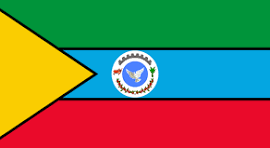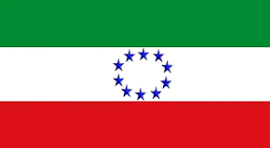Table of Contents
ADM2 : Procurement
Objective
To set out the procedures to be followed for procuring goods and services for the PROCEED program.
Responsibilities
The Finance & Administration Vice-Head of the technical bureau with the assigned financial expert of the BoF are responsible for the organisation of the procurement.
The Administrative Assistance supports the persons in charge of this process and verifies that they have the necessary skills to carry out the tasks and to complete them in a timely manner.
Inputs from other processes
- Approved budget (see Annex AS4)
- Operational plan (see Annex GOV1)
- Approved procurement plan (see Annex ADM2 – A1)
General principles
The procurement procedures shall be in accordance with the South Ethiopia Regional State Public Procurement and Property Administration Agency Proclamation No. 25/2016, and with the procurement guidelines for AFD-Financed Contracts in Foreign Countries, dated February 20241).
Goods and services are to be procured on the basis of a competitive selection process, which is transparent, open and fair, and guided by a principle of proportionality (context, risk analysis).
All persons involved shall respect the highest ethical principles during the procurement and the performance of contracts, and not engage in prohibited practices.
Documentation should be prepared, filed and saved as defined in Annex ADM1. Bid documents must be prepared in both Amharic and English for national bids. There is no international bid.
A procurement cannot be split in view of avoiding the limits set out in these guidelines. Artificial contract splitting means the division of the works or supplies or services into several smaller contracts with the aim of achieving lower contract values and as such avoiding a stricter procurement procedure. Should the intervention logic require the division of the contract, the procurement procedure used for the sub-contracts must be identical to the procurement procedure for the contract as a whole.
Tenderers who have legal or economic links to each other should not be assessed as separate bidders in a tendering process.
The Region commits to ensure that, to the best of its knowledge and belief, it is not promoting or engaging in violence, terrorism, or money laundering, nor is it making contracts to any entity that engages in these activities. The Region, supported by the Administrative Assistance, conduct an anti-terrorism screening through the “list of gel” established by the French Ministry of Finance and Economy2) or established by EU3).
Procurement methods
The following procurement methods can be used in the procurement of goods/services:
- Open tendering: open invitation to all bidders.
- Selective tendering: interested bidders selected through more than one stage of competition, so that only shortlisted bidders from the first stage are invited to the second stage.
- Limited tender: winning bidder is selected through competition involving limited number of candidates by sending invitation to their address without advertising the bid, at least three candidates are invited.
- Quotations: three quotes are obtained to ensure a fair market price, with lower documentation requirements than a limited tender.
- Direct contract: specific contracts not subject to competitive tendering and for which a specific exemption request has been made.
The selection of the procurement method depends on the procedure prescribed in the procurement plan which is based on the type and amount of each procurement. The procurement plan is presented in Annexe Annex ADM2 – A1 with the minimum procurement requirement.
The Procurement Plan is subject to review and change; it must be reviewed at least annually to ensure it reflect programmatic updates and inflation.. However, any modification requires the AFD's approval (no-objection notice).
Procurement thresholds
The thresholds for the PROCEED are fixed in EUR and presented in a table below.
An implementation document defining the current value in ETB of these thresholds shall be drawn up, updated and disseminated by the Administrative Assistance. This is done with a frequency not exceeding once every 6 months, at the request of any financial expert of the RTF or the BoF.
In the event that these thresholds exceed the threshold set out in federal or regional regulations, the lowest threshold will apply, unless a specific exemption is made and signed by the Regional Public Procurement and Property Administration Directorate Director, and validated by a AFD non objection.
- Threshold for the tenders organised for the PROCEED
| For Good, Service and Works | |
|---|---|
| Procurement method | Threshold (EUR) |
| Quotations | less than 2,000€ |
| Limited tender | More or equal to 2,000€ and less than 100,000€ |
| Open tender | More than 100,000€ |
In the event of a discrepancy between the procurement method set out in the procurement plan and the methods selected in accordance with the above threshold, the most stringent methods shall be applied.
Procurement committees and responsibilities
- The RTF Coordinator is responsible for the validation of the purchase request
- The bureau procurement expert is responsible to which procurement method is applied, based on the thresholds and the procurement plan and to prepare the necessary tender documents
- The committee evaluating the tender is composed of at least three technically competent members, having no conflict of interest with the bidders nor with each other.
- The procurement committee by default is composed of:
- RTF Coordinator.
- RTF relevant technical expert (1 or 2).
- Technical Bureau Procurement expert
The relevant technical expert(s) is identified based on the type of expense.
Ineligibility criteria
Tenderers submitting a tender in response to an invitation must certify that they are not in one of the situations listed in the exclusion and ineligibility criteria in Annexe Annex ADM2 – A3 by signing the administrative part of the tender.
Technical specifications
The technical specification shall clearly describe the requirements with respect to:
- Quality
- Performance
- Safety
- Dimensions / terminology / packaging / marking / labelling
- Processes/methods of production
- Conformity assessment procedures – based on national or internationally recognised standards where possible
- Focus on performance rather than design or descriptive characteristics
No specific reference to a particular trademark or name / brand / specific original producer or service provider, unless there is no sufficiently precise way of describing the procurement requirements, in which case words such as “or equivalent” may be included in the specifications.
Environmental and social requirements
The technical specifications as well as contracts are including specific social and environmental clauses to be respected by the tenderer and monitored by PROCEED implementer. They are listed in the Sustainability Framework in Annexe Annex GOV3 – A1.
Preparation and Submission of bids
- All documentation must be prepared based on the treatment and documentation requirements for each type of expense as defined in Annex AS5 – A1.
- Tenders including technical specifications may require AFD no-objection before distribution (see Annexe Annex ADM2 – A1 for details)
Selection methods
- Least-cost selection (LCS): the preferred and standard method of tender selection in PROCEED will be the least cost selection method: the contract will be awarded to the lowest priced tender that meets the technical requirements. A bid that does not comply with the minimum technical requirements will be considered as non-compliant and the bid will be rejected at the technical evaluation stage and its financial offer will not be evaluated.
- Quality-based selection (QBS): the contract is awarded to the tenderer whose technical proposal obtains the highest score, higher than the minimum technical score set out in the request for proposals. This requires an extremely good knowledge of market prices to properly determine costs.
- Quality and cost-based selection (QCBS): this selection method consists of a weighted evaluation of the technical and financial proposal. None of the procurement methods foreseen in the original procurement plan for the regions are based on this selection method. An amendment to the procurement plan will be requested should the need arise to select procurement on the basis of quality and cost.
The Annexe Annex ADM2 – A1 defines precisely the characteristics of the tender, selection methods and the AFD no-objection requirement for the planned procurements.
Evaluation of bids
- Name of bidder and total amount of each bid, discounts offered, and other relevant information is recorded upon opening of the bids.
- Where technical and financial proposals are submitted separately, the price quoted by bidders shall be opened after bidders have qualified based on the technical evaluation.
- The technical evaluation is based on technical documents provided on their products, on the evaluation of previous works and previous references.
- It is possible to ask bidders for clarification regarding their bids, provided that there is no change in the substance of the bid, including changes in price.
- It is possible to correct arithmetical errors and give notice to any correction to the concerned bidder.
- Bid evaluation and tenderer selection may require AFD no-objection before being distributed (see Annexe Annex ADM2 A1 for details on tender types)
- The successful bidder shall be notified and must sign a contract within 15 (fifteen) days of notification of the award, which includes general conditions set out in the bid documents, and any specific conditions as mutually agreed by both parties.
Rejection of bids (wholly or partially) / cancellation
A tender process can be cancelled or bids rejected:
- Where the price offered has “Considerable difference from the current market price published by the Central Statistics Agency, or from the price of a prominent manufacturer / price obtained through market survey if statistics are available.
- Non acceptable offers regarding the specifications of the tender.
- Significant changes in the needs due to valuable circumstances.
- Due to force majeure.
- Due to issues of collusion or other prohibited practices by some/all tenderers.
- Due to funding restrictions.
Key documents in procurement process
The Annexe Annex ADM2 – A2 defines the minimum information to be included in each key procurement document, and which documents are required for each procurement method.
Specificity of some contracts
The contract for water supply contractors
The Annexe Annex ADM2 – A4 defines the main characteristics of the contract for the water supply contractors.
The choice of these contracts is motivated by the following reasons:
- It is important to give priority to the quality of the works without undue competition on price. The main pre-selection criteria are capacity and experience based on previous water works.
- One of the objectives of the program is to promote the capacity of local companies to develop this specific know-how in order to be able to use it beyond the PROCEED contracts.
- The waterworks uses community labour and requires contractors with the capacity to manage this contribution during construction.
FTC contract
FTCs are contracted to multiply grass. FTCs have a special status in Ethiopia with a mandate to promote new agricultural practices and field trials in Kebele. FTC contracts shall be sole-source, non-competitive, fixed-price contracts (see Annexe Annex ADM2 – A5).
Contract prices are calculated on the basis of the area of grass planted and the number of farms targeted, with unit prices determined at the start of the program and indexed according to the rules set out in Annexe Annex ADM2 – A6.

